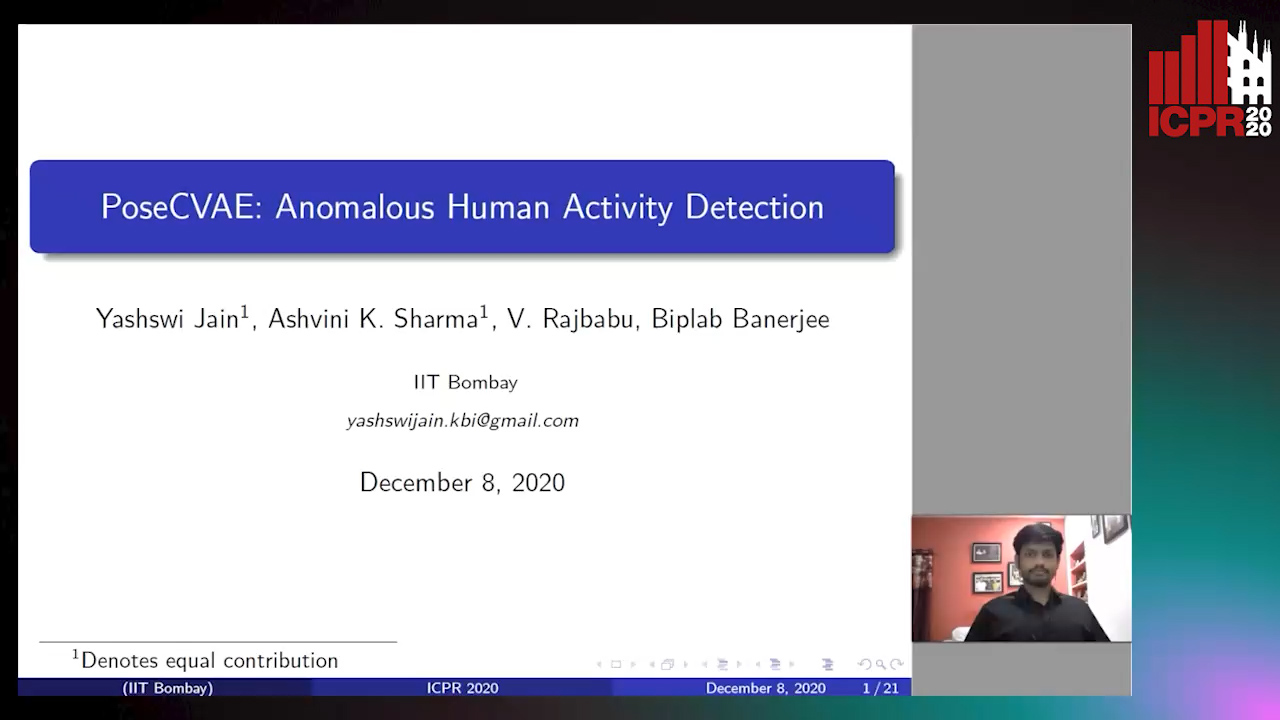Yashswi Jain
Paper download is intended for registered attendees only, and is
subjected to the IEEE Copyright Policy. Any other use is strongly forbidden.
Papers from this author
PoseCVAE: Anomalous Human Activity Detection
Yashswi Jain, Ashvini Kumar Sharma, Rajbabu Velmurugan, Biplab Banerjee

Auto-TLDR; PoseCVAE: Anomalous Human Activity Detection Using Generative Modeling
Abstract Slides Poster Similar
Anomalous human activity detection is the task of identifying human activities that differ from the usual. Existing techniques, in general, try to deploy some samples from an open-set (anomalous activities can not be represented as a closed set) to define the discriminator. However, it is non-trivial to obtain novel activity instances. To this end, we propose PoseCVAE, a novel anomalous human activity detection strategy using the notion of generative modeling. We adopt a hybrid training strategy comprising of self-supervised and unsupervised learning. The self-supervised learning helps the encoder and decoder to learn better latent space representation of human pose trajectories. We train our framework to predict future pose trajectory given a normal track of past poses, i.e., the goal is to learn a conditional posterior distribution that represents normal training data. To achieve this we use a novel adaptation of a conditional variational autoencoder (CVAE) and refer it as PoseCVAE. Future pose prediction will be erroneous if the given poses are sampled from a distribution different from the learnt posterior, which is indeed the case with abnormal activities. To further separate the abnormal class, we imitate abnormal poses in the encoded space by sampling from a distinct mixture of gaussians (MoG). We use a binary cross-entropy (BCE) loss as a novel addition to the standard CVAE loss function to achieve this. We test our framework on two publicly available datasets and achieve comparable performance to existing unsupervised methods that exploit pose information.